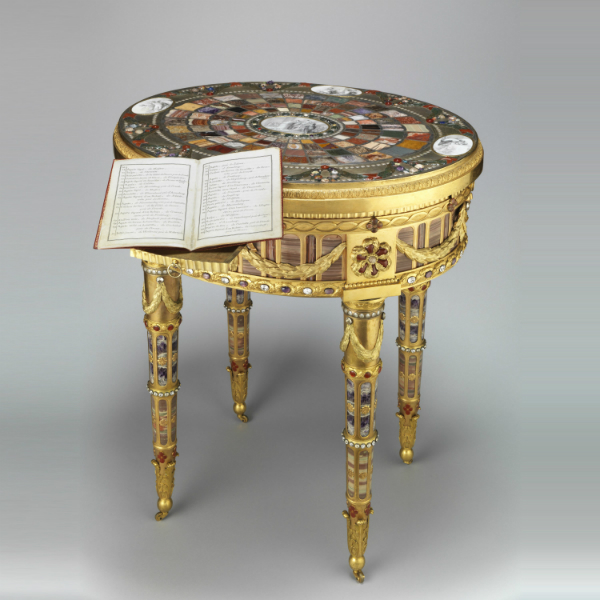Art World
Can Crowdfunding Save French Museums?


Lorena Muñoz-Alonso

After two consecutive years of cuts in the French government’s budget for cultural institutions, the country’s museums are sharpening their wits. This week, the Louvre launched its latest crowdfunding campaign, with the aim of raising €1 million to help fund the €12.5 million purchase of a jeweled piece of 18th century furniture, known as the Teschen Table (1780).
As the New York Times reported, the historic table—known colloquially as the “Table of Peace”—was given as a gift to French diplomat Louis Charles Auguste Le Tonnelier, Baron de Breteuil, as recognition for his role in negotiating the end of a 1779 Bavarian war. It is also known for its appearance in Marcel Proust’s Swann’s Way.
Since 2010, the Louvre has raised more than €4 million from almost 20,000 donors via its crowdfunding efforts. The proceeds have facilitated various purchases, including a medieval painting, and several ivory statuettes. They have also enabled the restoration of the iconic Winged Victory of Samothrace (190 BC).
The Louvre is hardly alone in employing internet-based fund-raising. Last week, the Musée d’Orsay also launched a campaign to raise €30,000 of the €600,000 required to restore Gustave Courbet’s L’Atelier du peintre (1854-55.) By Tuesday, the museum had collected more than €20,000.
This past May, the Musée Rodin also turned to the public to assist in the purchase of Rodin’s rare drawing, Celle qui fut la belle Heaulmière (see “Musée Rodin Turns to Crowd-Funding for Acquisition”). The Parisian museum implemented a system offering visitors the option to add an additional sum onto the price of admission to help raise the remaining €40,000 of the €300,000 needed to purchase the work. However, the effort was unsuccessful.
But museums cannot survive on crowdfunding alone. The Louvre, the Palace of Versailles, and the Musée d’Orsay recently announced that they will soon be opening their doors seven days a week. Unions are hesitant to accept the additional working hours (see “Unions Concerned By Seven-Day Opening for Paris’s Top Museums”). But the culture ministry hopes that one more day a week of ticket and merchandise sales could help bridge the museums’ budgetary gap.